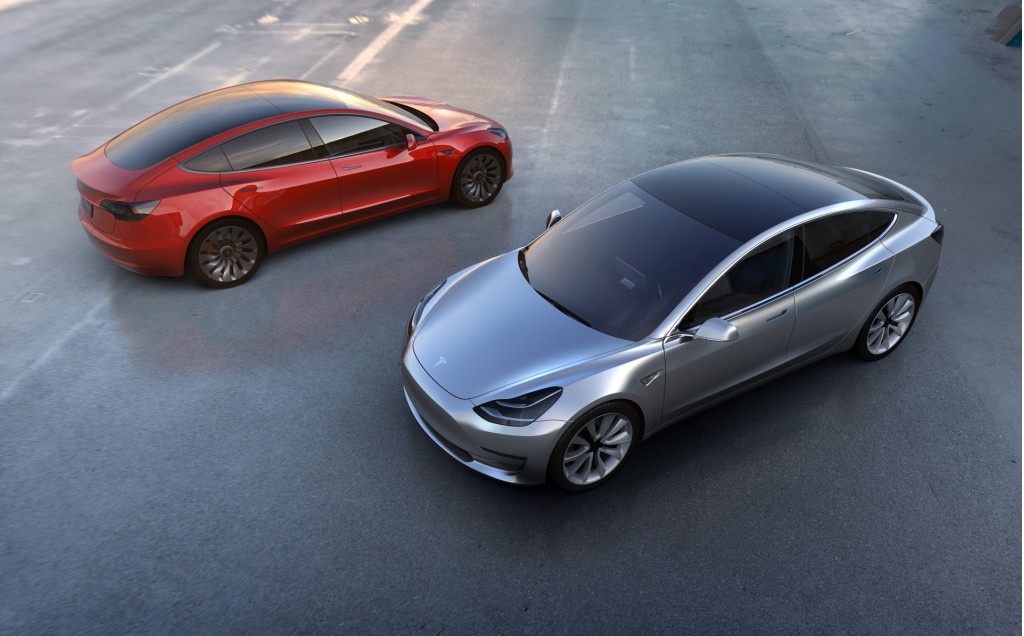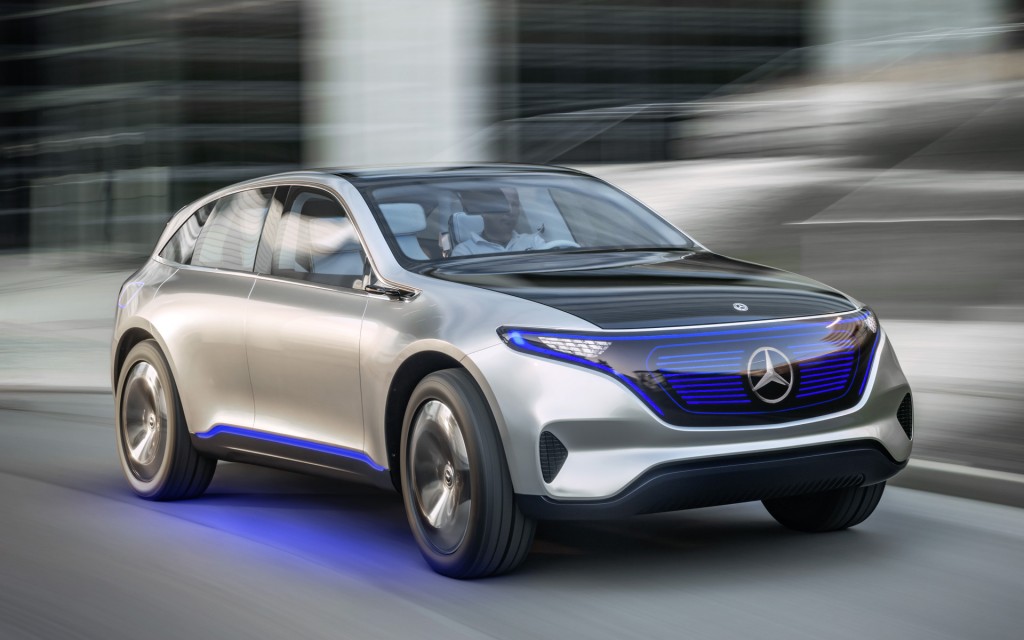The next couple of years promise to be quite interesting for electric cars.
A minimum of six new models are expected in that time period, all promising ranges of 200 miles or more—which until a few months ago had been the exclusive province of Tesla Motors.
The list includes two affordable 200-mile electric cars: the second-generation Nissan Leaf, and the highly anticipated Tesla Model 3.
DON'T MISS: Audi e-tron vs Jaguar I-Pace vs Mercedes EQ: electric luxury SUVs compared (Dec 2016)
It also includes the first production long-range battery-electric cars from Audi, Jaguar, and Mercedes-Benz.
Finally, the BMW i5 could prove to be a crucial model for the German automaker's "i" sub-brand, which has been in a holding pattern.
Here is a quick look at each of these models, and a summary of what we know so far.
Nissan IDS concept, 2015 Tokyo Motor Show
2018 Nissan Leaf
Along with the Chevrolet Bolt EV and the Tesla Model 3, the 2018 Nissan Leaf is one of three affordable electric cars with 200 miles of range or more that's expected to go into production this year.
The second-generation Leaf has big tire tracks to fill: the version it replaces was a major part of the first wave of modern electric cars, as well as the best-selling electric car in history.
The 2018 Leaf is expected to offer at least two battery-pack options, though only the largest is likely to provide the marquee value of 200-plus miles of range.
ALSO SEE: 2018 Nissan Leaf spy shots: our question on electric car update
The new Leaf will also be offered with Nissan's ProPilot technology, which the automaker says will offer limited self-driving capability.
Styling will likely be inspired by the Nissan IDS concept that first appeared at the 2015 Tokyo Motor Show, and will bring the Leaf more in line with other current Nissan models.
Expect the 2018 Nissan Leaf to be revealed this summer or fall, while retail sales will likely start at the very end of 2017 or perhaps early next year.
Tesla Model 3
2018 Tesla Model 3
With almost 400,000 reservations as of last August, the Tesla Model 3 is certainly one of the most anticipated upcoming new-car launches—electric or otherwise.
Those legions of reservation holders expect a car with at least some of the Model S's style, performance, and technology at a more affordable price.
Tesla has released relatively little information about the Model 3 since unveiling prototypes last year, but it has confirmed that the new sedan will have a range of at least 215 miles, and a base price of $35,000.
MORE: Tesla Model 3 timing confirmed: first cars in July, 5K a week by next year
Differing from electric compact hatchbacks in its price range, the Model 3 is expected to target German luxury sports sedans like the BMW 3-Series and Audi A4.
Tesla will likely offer a "P" performance version to drive that point home, as well as multiple battery-pack options and dual-motor all-wheel drive, as does the Model S.
In its most recent shareholder letter, Tesla said that it plans to start Model 3 production in July, and that it hopes to be building 5,000 per week by the end of this year.
Audi e-tron quattro concept, 2015 Frankfurt Auto Show
2019 (?) Audi e-tron
The Audi e-tron will start production next year at an Audi plant in Brussels, and will evolve the styling and powertrain components from the e-tron quattro concept that first appeared at the 2015 Frankfurt Motor Show.
The concept had a 95-kilowatt-hour lithium-ion battery pack and three electric motors—one at the front, two at the rear—providing a total of 369 kilowatts (496 horsepower) and 590 lb-ft of torque.
Audi claimed a range of 310 miles, albeit on the highly-optimistic European testing cycle. That number might well be closer to 250 miles under U.S. EPA testing.
Lithium-ion battery cells for the production model will be supplied by LG Chem and Samsung SDI.
The production model will likely adopt the concept's "crossover coupe" design, with a low roofline combined with more traditional SUV styling elements.
The e-tron name—rather than a model designation like Q6—is meant to echo that of the original Audi quattro, which introduced the automaker's now-famous all-wheel drive systems.
Rendering of BMW i5 electric crossover utility vehicle, from patent drawings [Indian Autos Blog]![Rendering of BMW i5 electric crossover utility vehicle, from patent drawings [Indian Autos Blog] Rendering of BMW i5 electric crossover utility vehicle, from patent drawings [Indian Autos Blog]](https://images.hgmsites.net/lrg/rendering-of-bmw-i5-electric-crossover-utility-vehicle-from-patent-drawings-indian-autos-blog_100578589_l.jpg)
2019 (?) BMW i5
The BMW i5 will bridge the fairly large gap between the German luxury automaker's i3 electric car and pricier, low-volume i8 plug-in hybrid.
The i5 will be built using the same aluminum frame and carbon-fiber-reinforced plastic (CFRP) body shell as the i3 and i8.
But a five-door crossover body will also give the i5 the most conventional configuration of any "i" model to date.
All-wheel drive will likely be at least an option, and the i5 is expected to have an EPA-rated range of 200 to 250 miles.
That range is expected to be dependent on a new generation of low-profile, high-capacity Samsung lithium-ion cells.
Jaguar I-Pace Concept, 2016 Los Angeles Auto Show
2019 (?) Jaguar I-Pace
The Jaguar I-Pace is a luxury crossover utility vehicle in the same vein as the Audi e-tron, and will go also into production next year, within months of the Audi.
Styling will likely carry over from the I-Pace concept that debuted at the 2016 Los Angeles Auto Show, which itself was inspired by Jaguar's stillborn C-X75 supercar.
The concept featured a 90-kwh battery pack and a pair of electric motors—one for each axle—that produced 150 kW (200 hp) and 258 lb-ft of torque apiece.
Its cells were supplied by LG Chem, and Jaguar quoted a 220-mile range on the EPA test cycle.
Jag will contract out assembly of the production I-Pace to Austrian firm Magna Steyr. Production is expected to begin in March or April of next year.
Mercedes-Benz Generation EQ concept, 2016 Paris auto show
2019 (?) Mercedes-Benz EQ
Mercedes-Benz threw its hat in the electric luxury SUV ring at the 2016 Paris Motor Show, when it unveiled the Generation EQ concept.
That previewed not only an upcoming production model but also a new "EQ" sub-brand, analogous to BMW i.
The production crossover utility vehicle will likely adopt the Generation EQ concept's layout of one electric motor per axle.
Its 70-kwh battery pack will use cells supplied by Mercedes parent Daimler's Deutsche Accumotive division.
Mercedes quoted a 310-mile range for the Generation EQ, matching Audi's estimate for the e-tron quattro concept. But that figure was also based on the European test cycle; a comparable U.S. EPA rating would be lower.
The SUV will be one of 10 electric cars Mercedes says it plans to launch under the EQ sub-brand by 2025
Porsche Mission E Concept - 2015 Frankfurt Auto Show live photos
2019 (?) Porsche Mission E
The Porsche Mission E sedan debuted as a concept at the 2015 Frankfurt Motor Show, and was confirmed for production three months later.
The low, sleek four-door Mission E serves as a counterpoint to the other established brands, all of which are focusing on electric SUVs.
Befitting a vehicle from one of the most famous sports-car makers, the Porsche will put greater emphasis on performance.
The concept boasted an output of 440 kilowatts (600 horsepower), and a claimed range of 310 miles (again, on the European testing cycle).
Porsche also described an 800-volt DC fast charging system that would allow the Mission E's large battery pack to be recharged to 80 percent in 15 minutes or so.
In December 2015, Porsche said the production Mission E would arrive "by the end of the decade."
_______________________________________________












